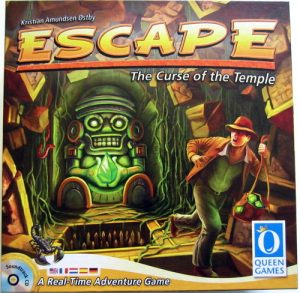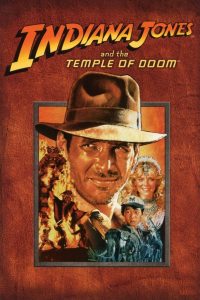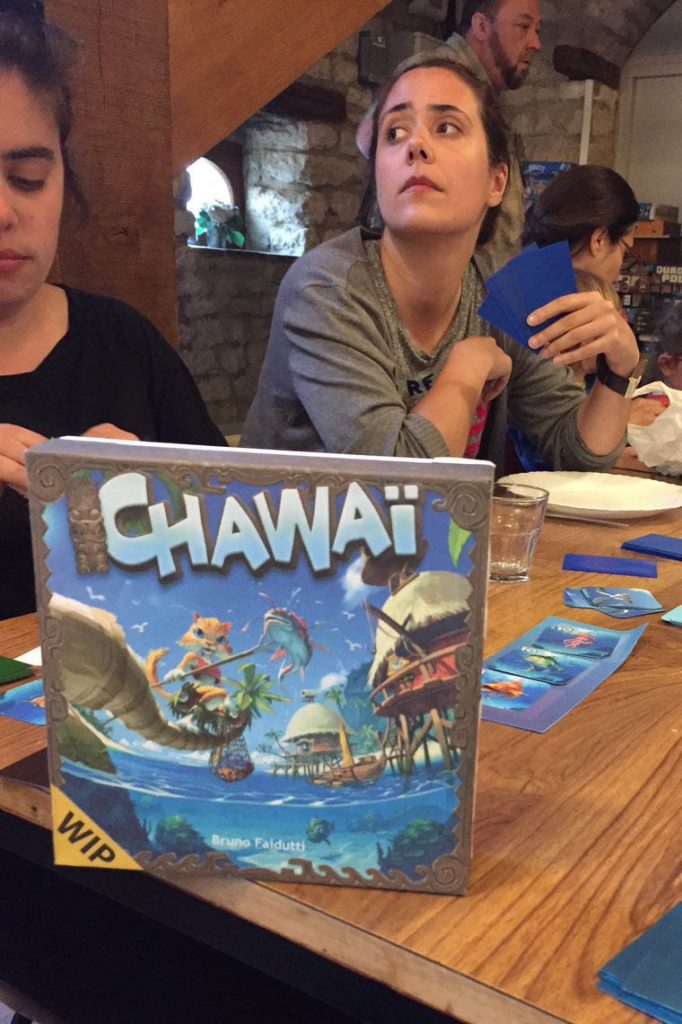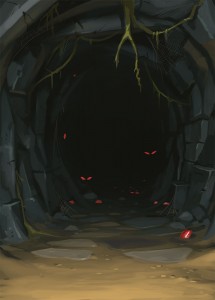Il est toujours très amusant pour un auteur de comparer les graphismes et les choix éditoriaux qui ont été faits pour deux éditions d’un même jeu. Quand il y a trois éditions, comme cela m’était déjà arrivé pour Toc Toc Toc!, dont les versions française, américaine et chinoise ont des illustrations différentes, c’est encore mieux. Je ne pouvais donc pas résister au plaisir facile d’un article présentant les graphismes de la nouvelle édition française de Diamant, qui arrive dans quelques semaines, et ce d’autant plus que cette version du jeu est très clairement ma préférée.
La première édition de Diamant, conçu en collaboration avec Alan R. Moon, est parue chez l’éditeur allemand Schmidt en 2005. Elle était illustrée par Claus Stephan, dans une ambiance très Indiana Jones. Les ventes n’étaient pas mauvaises, et nous n’avons jamais bien compris pourquoi l’éditeur l’avait abandonnée.
Pour l’édition américaine, Incan Gold, parue un an plus tard chez Gryphon Games est illustrée par Mathias Catrein, les joueurs n’explorent plus une grotte creusée dans la roche mais bien, comme l’indique le sous-titre, des ruines incas. L’illustrateur est allemand mais le graphisme, assez réaliste, est plus dans le style des jeux d’Outre-Atlantique.
Avant qu’Incan Gold ne bénéficie d’une version brésilienne, il y eut un temps une édition pirate brésilienne, Risco Total, dans laquelle les joueurs explorent une épave engloutie. Le nom de l’illustrateur en était tout aussi absent que celui des auteurs. Ce n’est pas bien grave, car il est quand même très valorisant d’être copié.




Non, ça n’a rien à voir avec Diamant – mais cela aurait pu. Explorer des ruines incas, cela se fait quand même pas mal dans le jeu de société.
La nouvelle édition française, qui arrive cet été, est illustrée par Paul Mafayon. La thématique et les éléments reprennent en grande partie ceux de l’édition Schmidt, mais dans un contexte plus contemporain, puisque les aventuriers arrivent dans une jeep vert fluo, plantent des tentes rondes aux couleurs vives et se munissent de torches électriques au look de sabre laser. Les références graphiques sont Indiana Jones, pour le titrage, mais aussi… Scooby Doo pour la composition de la couverture (et je ne l’aurais pas deviné si Paul ne l’avait pas révélé dans l’interview qui suit).


Les personnages et le titrage.
Paul Mafayon a en effet bien voulu répondre à quelques question sur son travail d’illustrateur de Diamant.
• Qu’est-ce qui différencie l’illustration de jeux de société d’autres travaux d’illustration, dans le livre, la BD ou le jeu video ? Est-ce plus facile ? Plus amusant ? Plus libre ?
Les attraits de l’illustration de jeux de société sont nombreux. Les productions sont courtes, ce qui permet de changer régulièrement d’univers ou de style, on y jouit d’une grande liberté et on suit les projets, la plupart du temps, du début a la fin. Cela change agréablement du monde du jeu vidéo des grands studios, où les productions peuvent durer des années et où les équipes marketing sont très voire trop nombreuses, d’où une grande versatilité dans leurs directives, et où souvent on ne travaille que sur une partie très restreinte du projet, sans aucune vue d’ensemble du jeu.
Dans le jeu de société, les enjeux économiques sont moindres, ce qui explique peut être que les éditeurs soient moins frileux. L’exploration de nouvelles pistes les effraie moins. Quand le coût de la production d’un jeu vidéo peut dépasser allègrement les 50 millions d’euros, la tentation de réutiliser sans cesse des recettes ayant déjà fait leur preuve est quasiment irrésistible.
Évidement je parle des gros studios, car on peut retrouver tout les plaisirs de la création graphique du jeu de société dans les petits studios de développement indépendant. Petites équipes, grande liberté….

Première ébauche de Paul pour la couverture de Diamant.
• Es-tu joueur de jeux de société ? Si oui, joues-tu aux jeux avant de les illustrer ? Après ?
Je joue très peu aux jeux de société, pas par manque de gout, mais par manque de temps. En revanche je joue a tout les jeux que j’illustre, le contraire serait impensable. Diamant est le premier jeu auquel j’avais déjà joué avant de travailler dessus. Cela ne m’aide pourtant pas plus que cela dans le processus créatif. Le style graphique, le rendu, le choix des ambiances colorées, on peut penser que tout cela et très lié a l’expérience de jeu, mais pas vraiment. Les briefs des éditeurs sont en général très bien faits – c’est leur métier – et s’ils me disent ce que le joueur doit ressentir devant telle image, ainsi que la nature de la cible (famille, hardcore gamer…), je n’ai pas besoin d’en savoir beaucoup plus pour travailler.
• Y a-t-il un jeu que tu aurais voulu illustrer ?
Il n’y a pas de jeu en particulier qui me fasse de l’œil actuellement. En revanche j’adorerais travailler dans un univers graphique a la Metal Slug ou Advance Wars Dual Strike pour un jeu de société (oui je suis vieux, j’ai donc de vieilles références, pas question de citer Boom Beach quand on peut citer la source d’inspiration originelle). Si un éditeur a ça dans les cartons je suis son homme !
• Comment as-tu abordé le travail sur Diamant ? As-tu regardé les illustrations des éditions précédentes ? T’en es-tu inspiré ?
Oui, j’ai regardé ce qui avait était fait avant, et en détail, ne serait-ce que pour ne pas faire la même chose sans m’en rendre compte. Quand je regarde une illustration, j’ai naturellement pleins de remarques qui me passent par la tête : “j’aurais mis plus de végétation” “ça manque d’ombres portées, de relief”. Après une première phase d’analyse, j’identifie tout ce qui peut être amélioré. Une fois que la direction globale est choisie, je ne reviens plus sur l’ancienne version, le but est de l’oublier, de prendre de la distance pour laisser libre court a la création.
• On est plutôt habitué à situer la thématique « exploration » dans un univers un peu vieillot, voire ringard. Pour Diamant, les clins d’œil sont très contemporains, avec une sorte de sabre laser et des tentes Quechua aux couleurs vives. Pourquoi ? Est-ce une idée à toi ou une demande de l’éditeur ?
Ce choix la est une idée a moi, qui m’est venue en regardant l’ancienne version.
Je me suis dit, que des tentes en toile blanche de nos jours… c’est introuvable, et l’idée reste quand même de faire en sorte que les joueurs s’identifient le plus possible aux personnages du jeu. En mettant en scène des objets plus contemporains, on facilite l’immersion.
En règle générale, dans le processus créatif, je pense que c’est une bonne chose de toujours réfléchir a la manière de rajouter un peu de modernisme (sauf bien sûr si cela va a l’encontre du thème). Naturellement, au moment de dessiner un objet ou un personnage, on est assailli de clichés. Dans le brief, les personnages devaient avancer dans le noir munis de torches, mais qui utilise encore des bouts de bois enflammés ? Mon inspiration c’était plus “Nature et Découvertes” et “Decathlon” que le musée colonial.
De plus, mon style graphique est connu pour être coloré et plutôt saturé. J’aime tellement les couleurs qu’il m’est presque impossible de faire autrement.
• Pour toi, le personnage au premier plan sur la couverture est-il un homme ou une femme ? Y a-t-il une idée précise derrière chacun des cinq personnages ?
Le personnage au premier plan… je préfère ne pas trancher, comme ça pas de guerre des sexes sur la couverture. Deux femmes, deux hommes et un personnage indéfini.
Il y a en revanche une idée bien précise derrière chaque personnage, et surtout derrière le groupe. Je voulais faire ressentir l’ambiance que l’on peut retrouver dans les vieux épisodes de Scooby Doo, un mélange de peur, de courage, mais aussi dans le jeu de convoitise. J’ai donc repris le code couleur du Scooby gang; le personnage au premier plan, c’est Sammy (vert et marron) juste a coté on a Véra (orange et rouge) vient Fred (jaune blanc bleu) puis Scooby Doo (marron) et enfin Daphné ( orange violet et vert).
• Par ailleurs, Iello m’a envoyé tes images pour Welcome to the Dungeon, mais je pense citer un ou deux autres jeux que tu as illustrés, notamment Loony Quest. Y en a-t-il un dont tu voudrais que je parle ?
Ben je n’ai pas d’autre jeux de sortis en fait, je suis assez nouveau dans le milieu…. Il y a Bunny Kingdom et Chawai qui sortent en fin d’année je crois… mais tu peux parler de tout ceux que tu veux, je n’ai pas de préférence.


Deux illustrations de Paul pour des jeux qui devraient sortir d’ici à la fin de l’année, Welcome Back to the Dungeon, la suite de Welcome to the Dungeon, et Chawai, un petit jeu de cartes dont je suis l’auteur, un peu dans le style de Stupide Vautour.
Diamant
Un jeu de Bruno Faidutti & Alan R. Moon
Illustré par Paul Mafayon
3 à 8 joueurs – 20 minutes
Publié par Iello (2016)
Ludovox Tric Trac Boardgamegeek
It’s always fun for a game designer to compare the graphics and editorial choices in two different editions of the same game. It’s even more fun when there are three completely different editions, something I had so far experienced only once, with Knock Knock!, whose French, US and Chinese editions have different graphics. Of coure, I could not resist posting an article about presenting the gorgeous art in the new French edition of Diamant, which will hit the shelves in the coming weeks, especially when it is, by far, my favorite of the three versions.
The first edition of Diamant, a game designed with Alan R. Moon, was published in 2005 by the German publisher Schmidt, with art by Claus Stephan. It didn’t sell that bad, and we never really understood why the publisher discontinued it.
The Us edition, Incan Gold, was published one year later by Gryphon Games. The art by Mathias Catrin tells a slightly different story, since the players are not exploring caves but, as told in the catch phrase, Incan ruins. The artist is German, but the graphic style looks very American to me.
Before Incan Gold was sold in Brazil, there was a pirate local edition with another setting – a sunken ship. Neither the illustrator nor the autours are named. Anyway, being plagiarized is very gratifying.
Well, none of these pictures has anything to do with Diamant, but they could have. Exploring Incan ruins and Lost Temples is something rather usual in boardgames.
The new French edition, which will hit the shelves in the next few weeks, sports new art by Paul Mafayon. The setting and storyline are very similar with those une the Schmidt edition, but in a more modern setting. Explorers arrive in a bright green SUV, install a camp made of modern dome tents and carry electrical torches, not wooden ones, when exploring the caves. As for the graphic references, the title font obviously refers to Indiana Jones and the cover composition to…. Scooby Doo – I would not have guessed the latter if Paul had not told me in the interview below.
I’ve asked Paul a few questions about his work on Diamant. Here are his answers.
• What makes boardgame illustration different from video game, comics or book illustration? Do you find it easier, or more fun, or more freeform?
There are many things to like in illustrating boardgames. It’s a short term job, which gives opportunities to jump from one universe to another, or even from one style to another, regularly. The artist is more free, more autonomous, and can usually follow a job from the start to finish. It’s a really nice change from big studios video games, where the work on a project can last for years, with too many different marketing teams whose direction can lack consistency, and in which an artist usually works on a very small part of the project, with no idea of the big picture.
Money stakes are lower in boardgames, which might explain why publishers are less timorous. They are not afraid to try new styles, and to let the illustrator loose. In video games, with development costs over 50 millions dollars, they cannot resist the temptation to recycle always the same old recipes. Of course, this is mostly true of big studios. With small indie video-game, an artist can have the same creativity, and the same fun, as in boardgames. The smaller the team, the greater the freedom.

Paul’s first draft for the Diamant cover.
• Do you play boardgames ? If you do, do you play a game before starting to work on its illustrations ? Do you play it afterwards ?
I seldom play boardgames, not that I don’t like them, but I don’t have the time. On the other hand, I play all the games I illustrate – not doing it would feel strange. Diamant is the first game I had already played before having to work on it, but I don’t think it helps much in the creative process. One could think that the graphic style or the color palette are linked to the game experience, but that’s not really the case. Publishers know their job, and give detailed briefs of what they want. If they tell me what the players are supposed to feel when looking at a picture, and what is the target audience (families, hardcore gamers…), I don’t need much more to start working.
• Is there a game you would have liked to illustrate ?
There’s no specific game I’m much excited about at the moment. On the other hand, I would love to work on a boardgame with a graphic setting à la Metal Slug or Advance Wars Dual Strike – yes, I know my references are old, but why talk of Boom Beach when I know the original sources. If a publisher has something like this in the pipe, just call me !
• How did you take on the work on Diamant? Did you look at the older versions of the game? Have-you been inspired by them?
Yes, I looked at all the details of the older editions, if only to be sure I won’t unintentionally do the same thing. When I look at a picture, I first think « I would have put more vegetation here », « it lacks shadows and reliefs », etc. Then I analyze the picture, and identify what I can do better. Once I know where I’m heading to, I don’t go back to the old picture, I try to forget it, to distance myself from it to be more creative.
• The graphic setting of exploration games usually looks a bit old fashioned. Your version of Diamant is deliberately, with an electric torch looking like a laser saber, and bright color tents. Why ? Is this your idea or the publisher’s one ?
It was my idea after looking at the older editions. I thought that white canvas ridge tents are nowhere to be found nowadays. If we want the game to be immersive, the players to identify with the characters, we have to use more actual items.
As a general rule, I think that, when it doesn’t go against the theme, trying to modernize the setting always foster creativity. When one starts to draw an item or a character, old clichés always jump to mind. The publisher’s brief had characters walking into the dark carrying burning torches – but who still uses wooden torches nowadays ?
Furthermore, my graphic style always use bright and saturated colors – I can’t help it, I love colors.
• Is the foreground character leading the company into the cave a man or a woman ? Is-there a specific intent or story behind each one of the five characters ?
The foreground character…. I’d rather not settle the issue. Two women, two men and one ambiguous character.
There is however a precise idea behind every character, and most of all behind the group. I wanted to recreate the mood in the old episodes of Scooby Doo, a mix of fear and bravery, with the added dimension of greed. That’s why I used the color code of the Scooby gang. The leading character is Shaggy (green and brown), then comes Velma (red and orange), Fred in yellow, white and blue, Scooby Doo (brown) and last comes Daphne (orange, purple and green).
• Iello sent me some pictures of Welcome to the Dungeon, but I’d like to mention one or two other games you’ve illustrated, like Loony Quest. Is there one you would like to mention ?
Well, I’m relatively new to boardgames, and I’ve not that many published games yet. I think Bunny Kingdom and Chawai are due to the end of the year, but you can mention any game you want, I’ve no preference.


Two characters by Paul Mafayon, for the Word of Warcraft card game and for Loony Quest.
Diamant
A game by Bruno Faidutti & Alan R. Moon
Graphics by Paul Mafayon
3 to 8 players – 20 minutes
Published by Iello (2016)
Boardgamegeek

Chawai, another game of mine illustrated by Paul Mafayon, playtested at the Ludopathic Gathering by two other game illustrators, Christine Deschamps and Maeva Kosmic.













Super interview, on apprend plein de choses 🙂